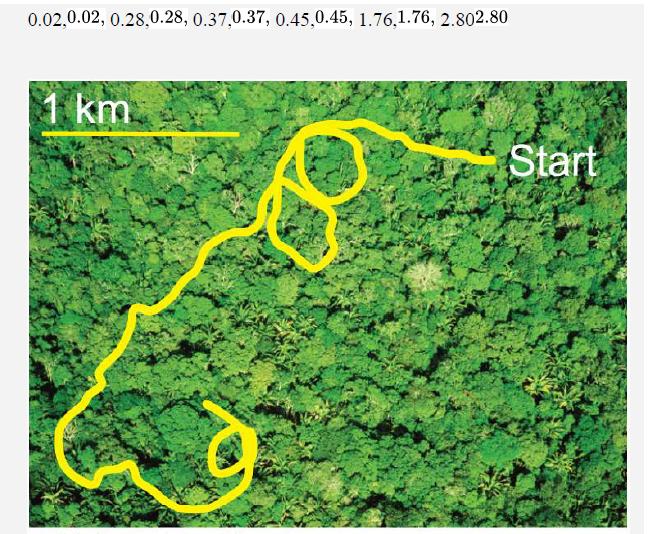Without external cues such as the sun, people attempting to walk in a straight line tend to
Question:
Without external cues such as the sun, people attempting to walk in a straight line tend to walk in circles. One idea is that most individuals have a tendency to turn in one direction because of internal physiological asymmetries, or because of differences between legs in length or strength.
Souman et al. (2009) tested for a directional tendency by blindfolding 15 participants in a large field and asking them to walk in a straight line. (The route of one representative participant is traced in the accompanying figure.) The numbers below are the median change in direction (turning angle) of each of the 15 participants measured in degrees per second. A negative angle refers to a left turn, whereas a positive number indicates a right turn.


a. Draw a graph showing the frequency distribution of the data. Is a trend in the mean angle suggested?
b. Do people tend to turn in one direction (e.g., left) more on average than the other direction (e.g., right)? Test whether the mean angle differs from zero.
c. Based on your results in part (b), is the following statement justified? “People do not have a tendency to turn more in one direction, on average, than the other direction.” Explain.
Step by Step Answer:

The Analysis Of Biological Data
ISBN: 9781319226237
3rd Edition
Authors: Michael C. Whitlock, Dolph Schluter





